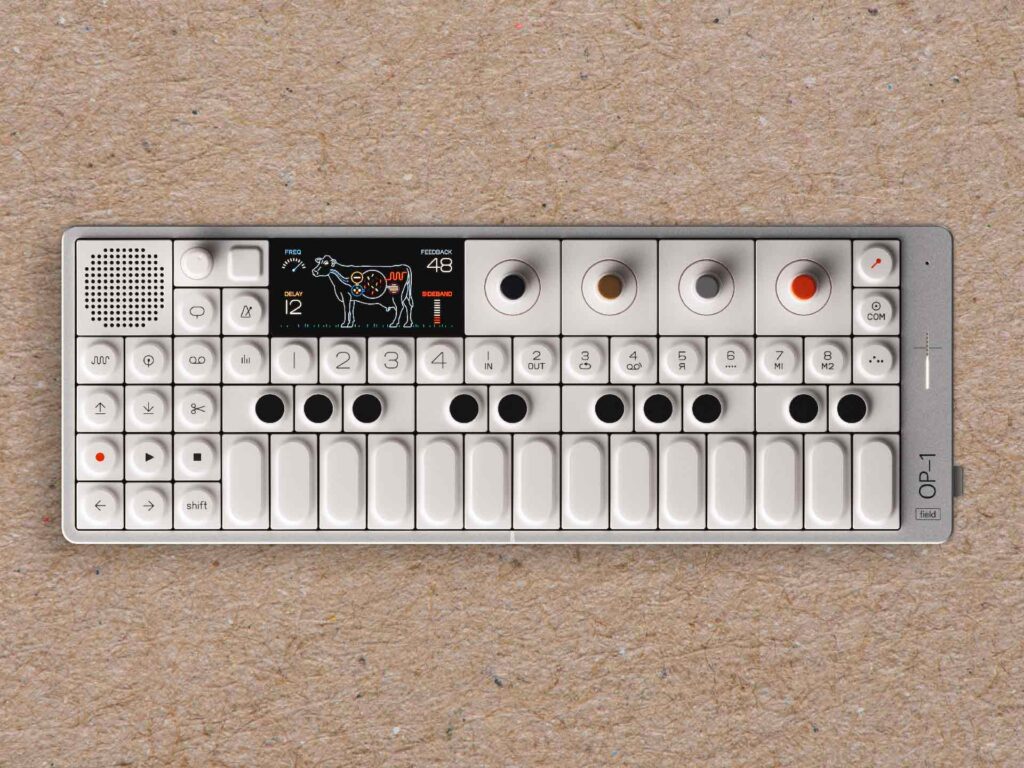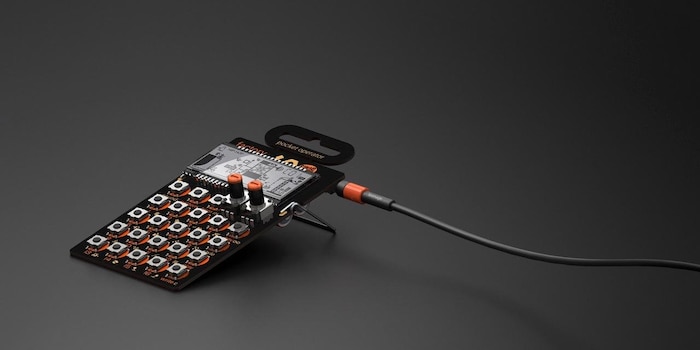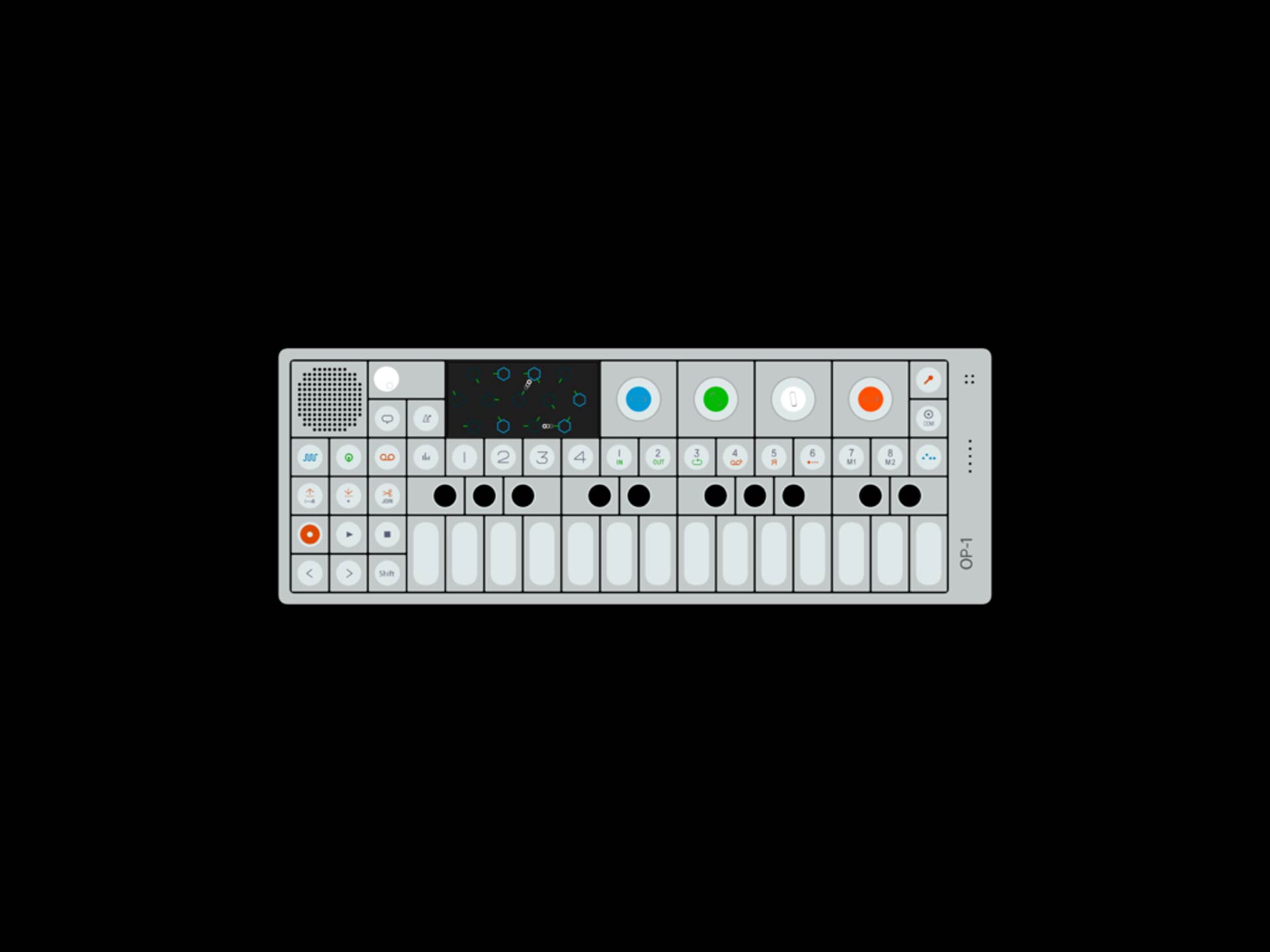
Whether tiny synths are an affordable route into electronic music production or disposable gimmicks, the possibility of carrying high-performance hardware in your backpack is making these small-scale machines a big noise.
Somewhere in the 2000s, the unique voice of the analog synthesizer came back into vogue, complete with its own hashtag-able musical movement, #synthwave. In a combination of coincidence and astute business acumen, new synths, drum machines and sequencers, plus a supporting cast of mixers, amps, multi-track recorders and other peripherals started to emerge from the tech industry, all with the contemporary twist of being diminutive in stature and low in cost. Such hardware has arguably made electronic music more accessible than ever, and in turn is inspiring new approaches to music-making.
“In many ways, the proliferation of these devices is a result of thinking about how technology fits into music-making as a social human activity, and less about the technology itself,” says Owen Osborn, CEO of Critter & Guitari, manufacturers of the progressive Organelle mini-synth. “Now that the technology is so readily available people are starting to consider more fun and exciting ways to make music with it.” It’s a point readily observable in the increasing trend of “synth jams,” online video that exhibits an extreme bias towards the usage of miniature equipment. Distributed via social networks, it’s a democratic landscape where keen users – amateurs, professionals and manufacturers alike – share footage and commentary of their extensive small-scale set-ups and the music that it empowers them to make, usually compositions of a free-form, improvisational and experimental manner, which might have previously been the realm of traditional instruments.
The goal of portability makes the invention of the pocket synth seem like less of a surprise and more of an inevitability
In the technology industry, the unwritten law has always been that smaller is better. It’s plausible that this derives from an in-built human need to carry our things around with us, and that drive certainly extends to musicians. Peter Kirn, the founder of Meeblip, manufacturers of the Triode, agrees: “Having something small can allow you to travel with your music. And sometimes it’s what you need to be inspired and feel creatively free.” Indeed, looking at the historical development of the synthesizer, the goal of portability makes the invention of the pocket synth seem like less of a surprise and more of an inevitability.
The first instruments to explore audio synthesis were monolithic contraptions. Synthesizers might seem like a modern product, but in fact the developmental seeds were sown somewhere back in the 13th or 14th centuries with the pipe organ, an invention which, rather than flowing an electric charge through different circuits, achieved its version of sound modulation by blowing air though adjustable banks of tubes. The first electric instruments to explore the same theories came around in the late 1800s with the Musical Telegraph, around 1876, or the Teilharmonium around 1896, and although both were smaller than the standard organ, moving them around was still out of the question. By the 1930s the first properly transportable instruments, like the Hammond organ, had arrived, but it wasn’t until the early 1960s that a major development in portable audio synthesis came to pass.
The emergence of transistor technology inspired German engineer Harald Bode to write an academic hypothesis that posited the notion of a fully portable electronic sound generator
The emergence of transistor technology inspired German engineer Harald Bode to write an academic hypothesis that posited the notion of a fully portable electronic sound generator. Though a theoretical exercise, significantly for musicians, the thinking was taken on board by a couple of American engineer going by the names of Buchla and Moog. Accordingly, the first of what could be described as being truly “pick up and play” instruments came with the Minimoog Model D and the Buchla Music Easel, both released in 1972. Their relative ease of use and affordability created an explosion in synthesizers heard across all genres of recorded and performed music, from rock to classical to easy listening, bringing audio synthesis out of the science labs and into the public sphere.
At this point in the timeline that well-trodden technological dictum, Moore’s Law, becomes more evident. In 1965 the co-founder of Intel, Gordon Moore, observed that the number of transistors in a dense integrated circuit was doubling about every two years. It’s a rule that has stood for 50 years and has has reflected the miniaturisation across all types of technological products, not least the synthesizer.
In the late 1970s, a truly seismic shrinkage event occurred with the introduction of the Sony Walkman, a consumer product that changed society’s relationship with electronic devices forever. As people got used to carrying their music around with them, so synths went small-scale. Experiments in recreating FM synthesis digitally had been going on throughout the 1970s, with the first commercially available digital synthesizer being the Casio VL-1 in 1979. While a cheap hand-held machine that became a staple of 1980s children’s bedrooms across the globe, it nevertheless boasted features such as a memory patch, 100-note sequencer and two modulation options. By 1990, technology had advanced enough for the Yamaha QY10 “Walkstation” to be able to fit an eight-track sequencer, 32-voice polyphony and 52 instruments in one tiny battery-powered box.
Roland had also experimented with reducing the footprint of their core products. The 303 , 606 and 808 were released in 1981, intended as easily carried companions for guitar players, but their sounds were famously not up to task and the company discontinued them in 1984. Commerce’s loss was culture’s gain when the units found their way into pawn shops, ready for budding but budget-conscious musicians to recognize their unusual sounds as being rather useful for the creation of a couple of new musical genres, namely hip-hop and techno.

Then, by the late 1990s, hardware seemed to disappear entirely. Digital audio workstations had been around since the late 1970s, but computers largely didn’t have the processing power to make them a viable concern. It wasn’t until the late 1980s that Macs, Amigas and Atari STs made DAWs as we now know them possible, supporting platforms like SoundEdit, SonicSystem and a small contender known as Pro Tools. DAWs introduced the concept of Virtual Studio Technology, AKA VSTs, software plug-ins which emulate studio hardware instruments. It is precisely when these started to become extractable from the DAW environment as an app – in most cases skeomorphed to look like their hardware counterparts – that you can witness the irony of digital devices essentially becoming standalone instruments. According to synthwave artist Morgan Z, AKA Chrome Canyon, a keen hardware user who also makes extensive use of VSTs, “Because the iPad is a touch interface it’s the next best thing to having real knobs. Also, with a dock that supports 1/4-inch out it’s basically like having a little synth in your backback.”
These digital recreations informed some part of the umbrella concept of the pocket synth. Around 2010, major industry players and small start-ups alike seem to have had the simultaneous brainwave that the popularity of VST apps might mean that people would be interested in buying micro-scale hardware, tools that retained the ultra-portability and ease-of-use of app-based instruments, but achieved their sound via the tactile, real-life, real-time analog means. “By the noughties, there was a sense of rebound from the all-in-the-box, plug-in paradigm and most hardware synths were too complicated,” says Tatsuya Takahashi, then Chief Engineer at Korg. “So I felt a need for people to have real hardware that had simple functions and sounded great.”
Takahashi went on to develop the Monotron, one of many instruments to subsequently explore synth miniaturisation. Whilst they differ in their approaches, all are unified in that they are capable of creating, modifying and combining tones out of the box, either via true or digitally recreated virtual analog synthesis, just like their full-size relatives. To understand the pocket synth field more clearly, it’s worth taking an in-depth look at some of the leading and intriguing offerings currently on the market.
As humans can already inject themselves with medical robots, might the future of electronic music be a William Gibson-esque landscape?
What does the pocket synth mean for the future of electronic music-making? As humans can already inject themselves with medical robots, might the future of electronic music be a William Gibson-esque landscape, where synth-sympathizers can bypass any need for hardware or software by injecting instruments directly into their brains? It’s a tantalizing and possibly terrifying vision, but one that most likely will stay science fiction. Although electronic music sets us free from the physical constraints of acoustic music, at some point similar restrictions apply. Once upon a time, circuit boards had to be a certain size due to the need to solder connections, but printed boards got rid of that. Now we have powerful synths the size of a calculator, but their very existence demonstrates that we still want or need to interface with something physical.
The whole point of a synth, whether large or small, analog or digital emulation, has always been the fact they are not a static instrument, as celebrated synth pioneer Suzanne Ciani explains: “As a composer, I love the fact that I can interact in real-time with a modular instrument, in my case a Buchla 200e, and create and sculpt sound compositionally. The modular allowed a completely immersive experience and was intuitive and poetic. It was a parallel universe to acoustic music and I didn’t want to cross them with each other. Thus, no keyboard. It was about the way sound could move more than about a particular sound.”

One often-heard criticism of pocket synths, however, are their limited features, as Detroit production duo Octave One, keen users of Meeblip products, noted. “Most professional recording artists we know can use just about anything to record, but not choose too because of a variety of reasons. Many micro-scale units may not have the features a pro might desire or the quality of the sound may not be up to what is expected. Sometimes those small audio connections can themselves be a big turn-off.”
Despite this, many artists celebrate the limitations that come with synths in small sizes, tiny interfaces and all. As Chrome Canyon puts it, “I think anything can become a music-making device. Kraftwerk showed us that really early on… and lots of people since have been using toys and other low-priced things to create unique sounds and music – so I really think it’s in the process of how things get used. But the idea of creating sound generation devices that are affordable to young kids and people that don’t have too much cash to burn seems like a great thing to me.”
Pocket synths also continue the full-size tradition of standardised connectivity, allowing products from different firms to be playable with each other. Units from different originators with different intentions openly bring quirks in their sound and playability to the table, allowing users to mix and match according to taste preference so that the result, albeit miniature, is a truly personal set up, which for Suzanne Ciani can “provide an introduction to the concept of electronic music.” But, as she observes, “I think there’s also a hunger for more sophisticated instruments, but those instruments are not so easily accessible to everyone who would like to get their hands on them. Eventually, some of the companies that make the smaller instruments will want to develop the more sophisticated instruments and that will take us all to the next level.”
Even these valid criticisms, though, don’t detract from the overall impact of pocket synths. They’ve been another vital addition to the continuing story of synthesizers, enabling new ways of thinking about sound generation, user interface and, perhaps most importantly, what we do with them. Their scale reduces the barrier of entry for electronic hardware, and in turn encourages playful experimentation in many ways distinct from what comes from working with full-size, “professional” synthesizers. The influential artist and producer Pete Kember, AKA Sonic Boom of Spacemen 3, is a keen user of pocket synths and considers their impact similarly. “Anything that makes a sound is a viable source, and ones that are easily modifiable – that’s a fantastic universe in itself. He goes on: “Some of my favourite artists today are ‘part-timers’ – amateurs. But that phrase really belies what they convey in their music, and often exceeds the depth of many so-called professionals.” It could be that the real importance of the pocket synth is not simply what they sound like, but rather how they might lead us toward redefining the meaning of musicianship in the 21st century.
– –

